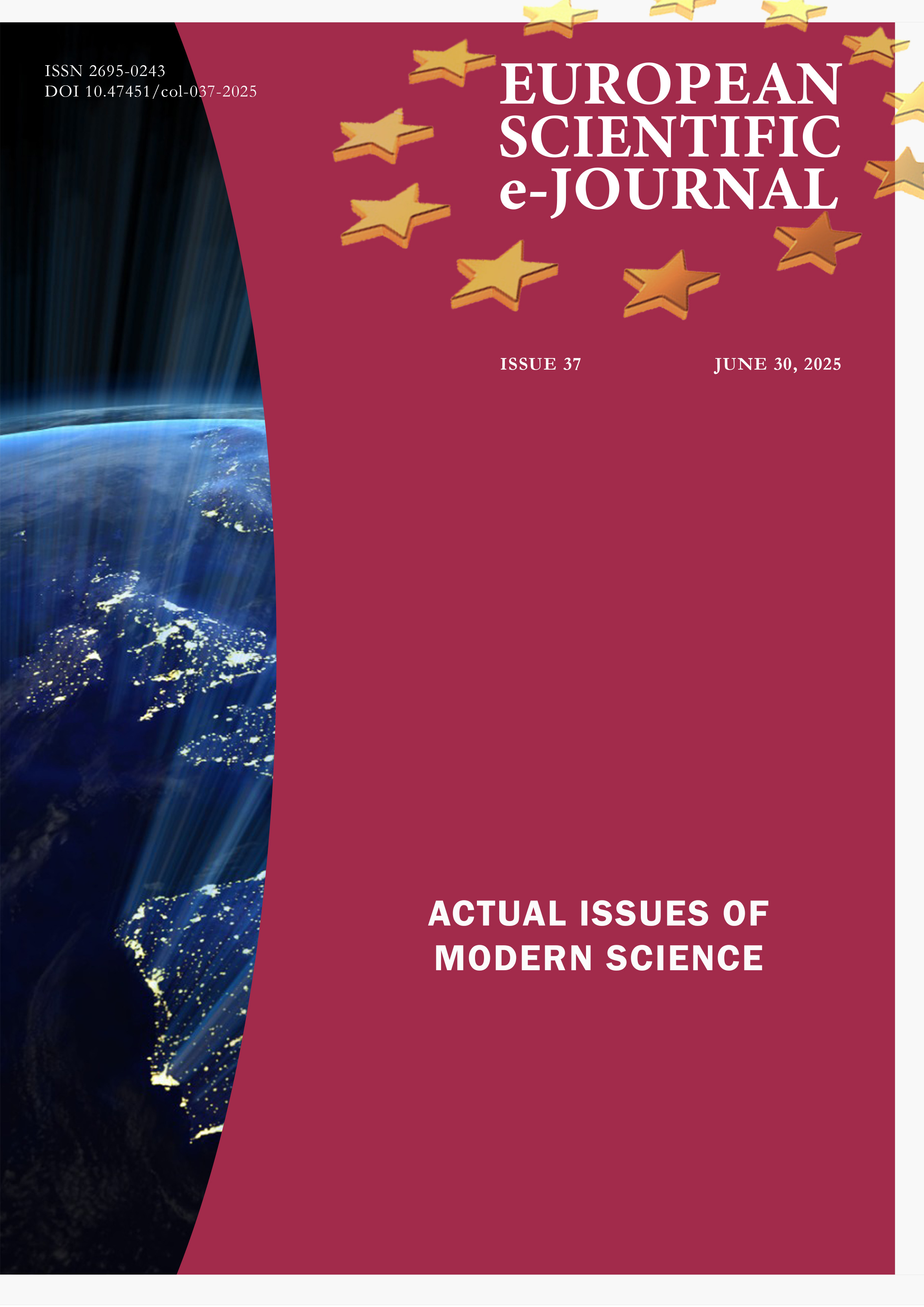Emotionally Adaptive UX Interfaces: A Scenario-Based Framework for Real-Time Personalization
DOI:
https://doi.org/10.47451/tec2025-08-02Keywords:
emotion-aware UX, adaptive interface, personalization, user modeling, affective computing, neural design logic, behavioral adaptationAbstract
The increasing complexity of user needs and digital contexts necessitates the development of adaptive user interfaces capable of emotional responsiveness. Traditional emotional personalization methods, reliant on biometric data, often prove costly, intrusive, or impractical for early prototypes and large-scale deployments, raising privacy concerns. This paper addresses these limitations by introducing a novel conceptual scenario-based behavioral framework for emotionally adaptive web UX. The object of the study is to explore how user interfaces can dynamically adjust to a user’s affective state using only observable behavioral indicators, without physiological sensors. The study aims to demonstrate that cues like navigation style, input pacing, or reaction latency can inform UX modifications aligning with emotional states, offering a scalable and ethically sustainable alternative or complement to biometric solutions. The methodology involved developing three synthetic user personas (stressed, bored, focused) based on Plutchik’s Wheel of Emotions and validated behavioral attributes. Interface mockups were designed in Figma, focusing on adaptive UX fragments. A structured heuristic evaluation, using a 5-point Likert scale and seven key metrics (e.g., perceived emotional fit, cognitive effort, mental model resonance) aligned with ISO 9241–210:2019 and ISO/IEC 25010:2023, assessed the framework. This work integrates insights from key researchers: Zeng et al. and Chen & Li on emotional congruence; Nielsen, Sarodnick & Brau on heuristic evaluation; Huang & Singh on emotional fit; Gentner & Stevens on mental models; and Liu & Wei and Khan & Shukla on emotion-aware computing. Results show that Hypothesis H1, affirming significant emotional alignment from scenario-based adaptation without real-time sensing, was validated. The stressed (4.6 emotional fit) and focused (4.7 mental model resonance) personas showed high alignment. Hypothesis H2, concerning behavioral adaptation’s sufficiency in low-tech contexts and its complementary role in high-fidelity designs, was also supported. Critically, the boredom scenario (low engagement 2.9) highlighted that overstimulation without guidance can disrupt mental models, suggesting the need for refined hybrid adaptation logic. The findings confirm emotional responsiveness can be approximated via behavioral interface design, with hybrid systems offering dynamic fine-tuning. This framework introduces a vital “hybrid potential” for both substituting biometrics in constrained environments and augmenting them in high-stakes systems.
Downloads
References
Alipour, M., Céret, É., & Dupuy-Chessa, S. (2023). A framework for user interface adaptation to emotions and their temporal aspects. Proceedings of the ACM on Human-Computer Interaction (EICS), 7, 1–25. https://doi.org/10.1145/3593238
Bargas-Avila, J. A., & Hornbæk, K. (2021). Towards a unified model of user experience. ACM Transactions on Computer-Human Interaction, 28(5), 1–45. https://doi.org/10.1145/3448607
Calvo, R. A., & D’Mello, S. (2010). Affect detection: An interdisciplinary review of models, methods, and their applications. IEEE Transactions on Affective Computing, 1(1), 18–37. https://doi.org/10.1109/T-AFFC.2010.1
Chen, K., & Li, Y. (2021). The role of emotion in UX: A systematic review. Behaviour & Information Technology, 40(7), 686–701. https://doi.org/10.1080/0144929X.2020.1795262
Dalvand, K., & Kazemifard, M. (2013). An adaptive user interface based on user’s emotion. In 2013 8th International Conference on Computer Science & Education (ICCSE) (pp. 131–136). IEEE. https://doi.org/10.1109/ICCSE.2013.6553912
Duric, Z., Gray, W. D., Heishman, R., Li, F., Rosenfeld, A., Schoelles, M. J., Schunn, C. D., & Wechsler, H. (2002). Integrating perceptual and cognitive modeling for adaptive and intelligent human–computer interaction. Proceedings of the IEEE, 90(7), 1272–1289. https://doi.org/10.1109/JPROC.2002.801448
Mahmud, R., Wu, Y., Abdullah, B. S., Berkovsky, S., Prasad, M., & Kocaballi, A. B. (2025). Evaluating user experience in conversational recommender systems: A systematic review across classical and LLM-powered approaches. arXiv:2508.02096. https://arxiv.org/abs/2508.02096
Matsuda, Y., Yoshida, K., & Oka, R. (2018). EmoTour: Estimating emotion and satisfaction of users based on behavioral cues and audiovisual data. Sensors, 18(11), 3978. https://doi.org/10.3390/s18113978
Schuller, B., Weninger, F., Zhang, Y., Ringeval, F., Batliner, A., Steidl, S., Eyben, F., Marchi, E., & Vinciarelli, A. (2018). Affective and behavioural computing: Lessons learnt from the first computational paralinguistics challenge. Computer Speech & Language, 53–54, 104–131. https://doi.org/10.1016/j.csl.2018.02.004
Stephanidis, C., Salvendy, G., Antona, M., & Chen, J. Y. C. (2021). User experience evaluation in intelligent environments: A comprehensive framework. Technologies, 9(2), 41. https://doi.org/10.3390/technologies9020041
Sun, N., & Jiang, Y. (2025). Eye movements and user emotional experience: A study in interface design. Frontiers in Psychology, 16, 1455177. https://doi.org/10.3389/fpsyg.2025.1455177
Tao, J., & Tan, T. (2005). Affective computing: A review. In J. Tao, T. Tan, & R. W. Picard (Eds.), Affective computing and intelligent interaction (ACII 2005). Lecture Notes in Computer Science, 3784, 981–995.
Published
Issue
Section
License
Copyright (c) 2025 European Scientific e-Journal

This work is licensed under a Creative Commons Attribution 4.0 International License.
The European Scientific e-Journal (ESEJ) is an open access journal. Articles are available free of charge as PDF files on the website of the European Institute for Innovation Development. PDF files can be previewed with Acrobat Reader from www.adobe.com.
All articles of the “Tuculart Student Scientific” are published under a Creative Commons Attribution 4.0 Generic (CC BY 4.0) International license.
According to the Creative Commons Attribution 4.0 Generic (CC BY 4.0) International license, the users are free to Share — copy and redistribute the material in any medium or format for any purpose, even commercially (the licensor cannot revoke these freedoms as long as you follow the license terms).
Under the following terms:
- Attribution — You must give appropriate credit, provide a link to the license, and indicate if changes were made. You may do so in any reasonable manner, but not in any way that suggests the licensor endorses you or your use.
- No additional restrictions — You may not apply legal terms or technological measures that legally restrict others from doing anything the license permits.


